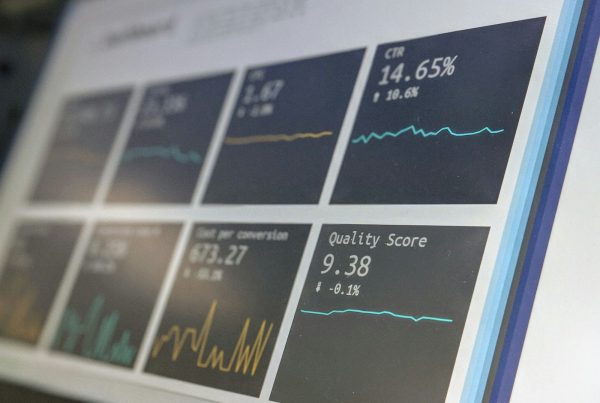Featuring Gunther De Backer, Partner at Backstage Communication

In today’s volatile business landscape, where reputational capital can swing wildly in a matter of minutes, crisis communication has evolved from a reactive function into a core element of corporate strategy. Whether the trigger is a cyberattack, regulatory investigation, supply chain disruption, or ethical lapse, the capacity to manage a crisis with clarity, transparency, and integrity can determine whether a company emerges stronger—or suffers lasting damage.
Why work with a PR Agency to build your crisis communication plan
The Myth of “If”—Every Company Will Face a Crisis
“There’s a dangerous misconception that crises are exceptions,” De Backer begins. “In truth, they are inevitable. The real question is not if a crisis will hit, but when—and how well-prepared the company is when it does.”
Too often, companies delay crisis preparedness because they view communication as a soft discipline—an afterthought to legal or operational planning. But history has shown that stakeholders, from investors to employees and regulators, judge companies less on the fact that something went wrong, and more on how they handle it.
“When stakeholders feel ignored, deceived, or left in the dark, trust collapses. Once lost, that trust is difficult—sometimes impossible—to rebuild,” De Backer explains.
The First Rule of Crisis: Communication Is Leadership
Crisis communication is not just about public relations; it’s a leadership function. In moments of uncertainty, people don’t look for perfection—they look for reassurance, competence, and vision. The quality of a company’s communication during a crisis often reflects the quality of its leadership.
“A well-briefed spokesperson becomes the voice of the company, the interpreter of strategy, the messenger of accountability,” says De Backer. “You can’t improvise that role under fire. You need systems, training, and trust.”
That’s why leading corporates appoint seasoned communicators long before a crisis hits and ensure that both the CEO and key executives are trained to align on messages, tone, and timing.
Backstage : How the Messaging Machine Works
While the public only sees the final press release, media statement, or interview clip, the real engine of crisis communication lies behind the scenes. It’s a complex choreography involving legal, HR, compliance, investor relations, and—critically—communications professionals.
Gunther De Backer offers a backstage view: “In a typical scenario, you might have minutes to draft an initial holding statement, hours to prepare an internal briefing, and days to deliver follow-up actions. Every line is weighed not only for clarity but for legal exposure, reputational risk, and audience perception.”
The pressure is intense, the stakes are high, and information evolves rapidly. That’s why companies that invest in scenario planning, crisis playbooks, and message rehearsal gain a critical edge. They can move swiftly without descending into chaos.
The Three Audiences You Must Never Ignore
A classic mistake in crisis response is to focus solely on external media while neglecting internal stakeholders. But as De Backer underscores, “Employees are your most credible brand ambassadors—or your biggest risk.”
In any crisis, three audiences demand tailored communication:
1. Employees – They need clarity, security, and a sense of direction. If they’re left to piece together rumours or news headlines, morale and productivity suffer.
2. Investors – They need facts, impact assessments, and evidence that management is in control. Transparency and responsiveness are key to avoiding a share price freefall.
3. Media and Public – They want answers, context, and accountability. How a company appears in the first 24 hours often sets the tone for public judgment.
How to build a crisis communication plan
“The key is orchestration,” De Backer emphasizes. “Each message must reinforce the others, align with corporate values, and reflect the truth—without overstepping legal constraints.”
Digital Acceleration and the 24-Hour Crisis Cycle
Social media has radically compressed the crisis timeline. What once took days now unfolds in real time—on Twitter/X, LinkedIn, and even TikTok. Misinformation spreads fast, and silence is interpreted as guilt or incompetence.
“Speed no longer means sloppy. It means being ready—having pre-approved messages, clear escalation lines, and trained media responders in place,” says De Backer.
This demands digital listening tools, media monitoring, and rapid response units that can track the narrative as it evolves. It also means anticipating stakeholder concerns proactively, not just reacting defensively.
Reputation as a Financial Asset
In the world of finance, reputation isn’t abstract—it’s monetizable. A single reputational incident can shave billions off a company’s market cap or trigger investor exits. Conversely, a well-handled crisis can enhance investor confidence.
“The markets reward maturity,” De Backer notes. “Investors know bad things happen. But when a company demonstrates transparency, accountability, and strategic clarity under pressure, that’s a signal of resilience—and of leadership worth backing.”
Boards and executive teams must therefore treat crisis communication as an investment in brand equity and shareholder value—not just a damage-control exercise.
From Regret to Reset: The Post-Crisis Opportunity
Every crisis, handled well, offers a unique opportunity: to reset culture, rebuild trust, and re-energize stakeholders.
“The companies that come out stronger are those that don’t just apologize—they act,” De Backer says. “They update governance, accelerate reforms, and communicate those changes with humility and purpose.”
He points to companies that have turned scandals into turning points—launching ESG reforms, modernizing supply chains, or instituting new transparency standards that set them apart from peers.
“This is where communication becomes transformation,” he adds. “The crisis becomes a catalyst for change.”
Final Thought: Preparedness Is Power
As global volatility increases—from geopolitical risks to cyber threats to activist pressure—corporate leaders must accept that crisis readiness is not optional. It’s a core competence.
“Think of it like fire drills,” De Backer concludes. “You hope you never use them—but when the alarm sounds, you’ll be glad you prepared.”
In the boardroom and in the newsroom, the companies that win are those who can communicate in complexity, lead with authenticity, and act with conviction.
Gunther De Backer on the Crisis Commandments
1. Respond Fast, Not Loose – “Speed is crucial, but don’t sacrifice truth. Delay erodes trust; inaccuracy destroys it.”
2. Show Empathy and Authority – “People need to know you care and that you’re in control.
3. Never Lie, Never Speculate – “It’s better to say ‘We’re investigating’ than to guess or mislead.”
4. Train Before You’re Tested – “No one communicates well under panic without prior prep.”
5. Close the Loop – “Don’t vanish after the headlines fade. Communicate the fix and the future.”
Download this document as PDF.





